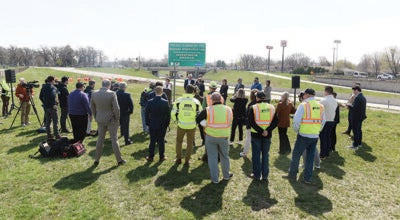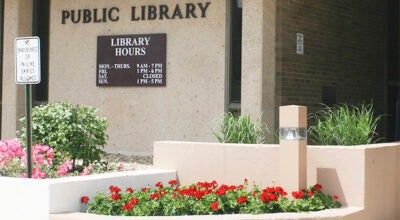Beer vendor helped lobby for the St. Paul Saints ballpark
Published 9:00 am Sunday, August 23, 2015
ST. PAUL — Julian Loscalzo talks like what he is: A ballpark beer vendor who grew up outside Philadelphia, a stone’s throw from the airport.
He swears when he’s happy. He swears a lot.
“I was a blue-collar, working-class kid, one of the first in town to go to college. You know how that is,” he said.
Besides working as a beer vendor, Loscalzo manages the St. Paul end of a friend’s bicycle-taxi business and leads ballpark tours around the country.
Somehow, he finds time to lobby at the state Capitol. Loscalzo is a registered lobbyist for a women’s shelter, a handful of nonprofit and economic-development organizations and the St. Paul Saints baseball team.
Some in the independent league team’s upper echelons credit Loscalzo with helping to clinch the necessary support for St. Paul’s $63 million regional ballpark, CHS Field. The 7,200-seat ballpark has been drawing standing-room-only crowds since it opened in May.
With Loscalzo as their mouthpiece, the Saints promised lawmakers they would make their new home a people’s ballpark. From 2005 to 2012, he talked up all of the affordable events it would offer, including more than 100 non-Saints gatherings, from free movie nights to American Legion baseball tournaments.
“It was a city project, but for lack of a better term, we were the soft side of the project,” said Loscalzo, a St. Paul resident since 1976. “We were the fun, the high school leagues. As it turned out, the Greater Minnesota legislators knew more about Midway Stadium than a lot of our St. Paul guys. Their (kids) had come down for our high school tournaments.
“And we said, hey, listen, we’re going to move that all downtown,” he said. “We had a different story to tell than the Twins, or the Vikings, or anybody else. We were truly selling a public facility that had a private enterprise, the St. Paul Saints, as a primary tenant. It was still an uphill battle.”
Getting lawmakers to support relocating the team from the badly aging Midway Stadium on Energy Park Drive took nearly seven years.
“The Saints deal was a fun thing to do, though,” he said. “But what were they going to do, threaten to move to Woodbury?”
In September 2012, Gov. Mark Dayton announced he would direct $25 million in state bonding funds toward the ballpark project, to minimal public criticism from state lawmakers. They were well acquainted with the proposal, thanks in large part to Loscalzo.
The money represented more than half the $47.5 million in grant funding that had been set aside by lawmakers with the Minnesota Department of Employment and Economic Development.
It was a watershed moment for the Saints and Lowertown.
“The Saints scored pretty well, because they were putting in $10 million of private money,” said Mark Phillips, who was DEED commissioner at the time. “But the city had applied for almost $30 million, and that was problematic, because it was quite a big number.”
Phillips remembers Loscalzo running between his office, the city and the team to answer questions as some 90 project applications were ranked.
“If you wanted to find out if something was doable, you had to count on Julian to see if this could happen or that could happen,” Phillips said. “He had a good relationship on all sides. Plus, he’s Mr. Baseball.”
How did Loscalzo get a job lobbying for the Saints?
In part, by opposing public funding for sports stadiums, tooth and nail. It all started around 1978, with plans to tear down the old open-air Metropolitan Stadium in Bloomington and sell off its wooden seats.
Loscalzo loved those seats. And he walked the halls of the Capitol, telling anyone who would listen to leave the Met alone.
“I started out with the ‘Save the Met’ thing,” said Loscalzo, who failed at blocking construction of the Metrodome. “I was basically a beer vendor who said building a dome is stupid. And we were right.
“The ironic thing was, it was a good public policy project,” he added. “I mean, it paid for itself. When was the last time a stadium paid for itself? But it was ugly.”
Now the Metrodome in downtown Minneapolis is gone. In its place, a towering new Minnesota Vikings stadium is being built. Loscalzo never sold beer at the old place and probably won’t at the new one.
“I never did the Metrodome,” Loscalzo said. “I never liked it. (Saints owner Mike Veeck) will tell you that I’ve been opposed to every stadium.”
Politicized by his failed effort to save the Met, Loscalzo has continued lobbying, off and on, for the past 30 years or more. His clients include four nonprofits and economic-development groups, from St. Paul’s Neighborhood Development Center to the Harriet Tubman Center, a women’s shelter.
He got hooked up with the Saints as a beer vendor in 1991, and now oversees Capital City Pedicabs, a fleet of some 8 to 12 bicycle-taxis that pick up passengers at parking ramps and take them to CHS Field.
The Lowertown ballpark was different from other stadium proposals in Loscalzo’s eyes, despite the heavy degree of public funding.
Of the $63 million that went into the field, some $51 million came from public sources, including more than $25 million from the state.
But the city-owned field, he told lawmakers, would replace the blighted and long-vacant Gillette/Diamond Products manufacturing warehouse off Fifth and Wall streets on the east side of downtown. And it would offer any number of free or low-cost events on top of Saints games.
He recalled sitting down with former Senate Majority Leader Larry Pogemiller to make his pitch. Fifteen minutes into the conversation, Pogemiller was taken aback by the simple calculus: A public baseball field will replace blight.
“That’s it?” Loscalzo recalled Pogemiller saying.
“It was easy to justify the public purpose,” Loscalzo said. “I have friends who fight with me about it, but just in the last week, I had a Minneapolis friend say, ‘I didn’t realize it was going to be used for so much other stuff.’”





